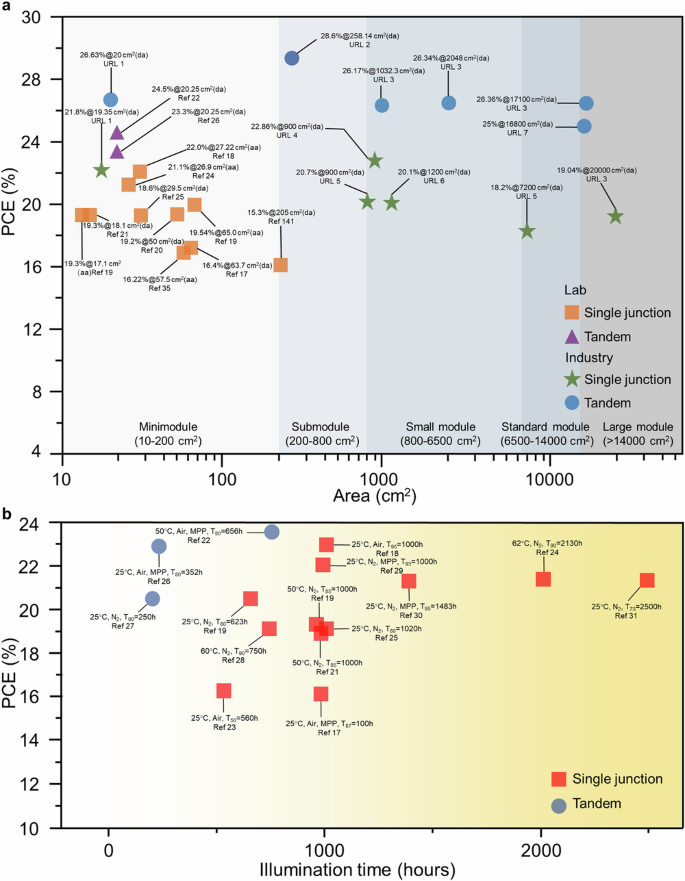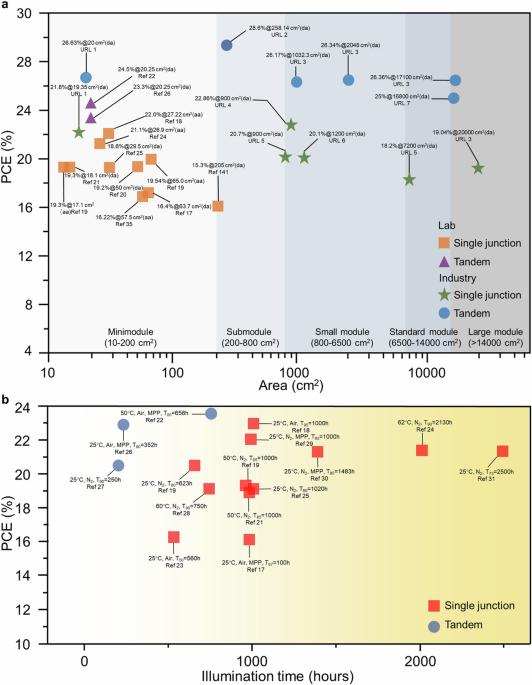操纵卤化物过氧化物晶体的结晶动力学以实现大面积太阳能模块
IF 7.5
Q1 MATERIALS SCIENCE, MULTIDISCIPLINARY
引用次数: 0
摘要
在过去十年中,实验室规模的单结过氧化物太阳能电池取得了超过 26.1% 的显著功率转换效率。然而,在向工业规模生产过渡的过程中,我们发现了巨大的效率差距。核心挑战在于难以大规模实现均匀、高质量的过氧化物薄膜。为解决这一问题,近年来出现了各种创新的结晶操作策略。本综述基于对通过刀片/槽模镀膜方法制备的大面积过氧化物薄膜的成核和生长机制的深入基础理解,对大面积过氧化物太阳能模块的结晶控制策略进行了深入探讨。最后,我们探讨了旨在提高大面积 PSM 效率和稳定性的未来途径,从而将该领域引向商业上可行的应用。本文章由计算机程序翻译,如有差异,请以英文原文为准。


Manipulating the crystallization kinetics of halide perovskites for large-area solar modules
In the last decade, laboratory-scale single-junction perovskite solar cells have achieved a remarkable power conversion efficiency exceeding 26.1%. However, the transition to industrial-scale production has unveiled a significant efficiency gap. The central challenge lies in the difficulty of achieving uniform, high-quality perovskite films on a large scale. To tackle this issue, various innovative strategies for manipulating crystallization have emerged in recent years. Based on an in-depth fundamental understanding of the nucleation and growth mechanisms in large-area perovskite films prepared through blade/slot-die coating methods, this review offers a critical examination of crystallization manipulation strategies for large-area perovskite solar modules. Lastly, we explore future avenues aimed at enhancing the efficiency and stability of large-area PSMs, thereby steering the field toward commercially viable applications. A key challenge in scaling-up the synthesis of perovskite solar cells is ensuring the same crystal quality in a large-area device as on the lab scale. This Review discusses how perovskite crystallization kinetics can be controlled, so to achieve high power conversion efficiency and stability.
求助全文
通过发布文献求助,成功后即可免费获取论文全文。
去求助
来源期刊

Communications Materials
MATERIALS SCIENCE, MULTIDISCIPLINARY-
CiteScore
12.10
自引率
1.30%
发文量
85
审稿时长
17 weeks
期刊介绍:
Communications Materials, a selective open access journal within Nature Portfolio, is dedicated to publishing top-tier research, reviews, and commentary across all facets of materials science. The journal showcases significant advancements in specialized research areas, encompassing both fundamental and applied studies. Serving as an open access option for materials sciences, Communications Materials applies less stringent criteria for impact and significance compared to Nature-branded journals, including Nature Communications.
 求助内容:
求助内容: 应助结果提醒方式:
应助结果提醒方式:


